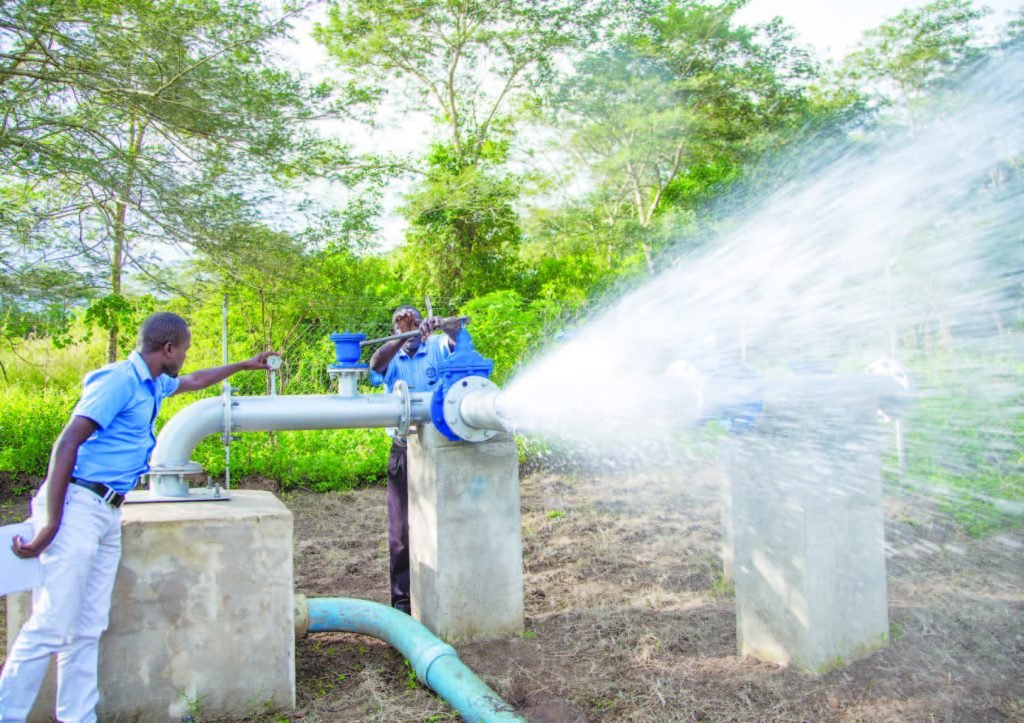Water ups war on Covid
Frequent sights of people washing hands before entering Mwanza District Hospital personify improved water supply in the southern border strip.
Just two years ago, the 250-bed hospital was grappling with poor sanitation due to water hiccups.

“For decades, taps in the health facility weren’t producing adequate water. Water supply was erratic much to the disadvantage of health workers, patients and guardians,” says Greston Chavinda, senior maintenance supervisor at the hospital.
The frequent drying of taps posed a threat to infection prevention efforts prescribed by the Ministry of Health, including hand hygiene for patients, guardians and health workers.
“The hospital requires a lot of water for sanitation and hygiene because nobody comes here to get infected, but to get treatment. So it was risky to operate without adequate water,” he says.
Not anymore.
The hospital now receives adequate water from a high-yielding borehole for its wards, laboratories, theatres, laundry, kitchen, office blocks and other spaces.
The high-pressure, solar-powered borehole has made it easy for hospital staff and patients to prevent infection in the health facility, which serves hundreds of Malawians and Mozambicans.
“Water is essential for infection prevention. You cannot protect yourself and everyone around you if you don’t have access to water,” Chavinda says.
Today, patients and guardians rely on a borehole drilled to ease water scarcity.
The high yielding boreholes deliver improved water supply to more than 2 500 Southern Region Water Board (SRWB) connections in Mwanza. This is one of the quick gains from the Malawi Drought Recovery and Resilience project (MDRRP),now restructured as Malawi Resilience and Disaster Risk Management. The project is implemented by the Ministry of Forestry and Natural Resources with funding from the World Bank in conjunction with the Government of Malawi.
“With this partnership, the hospital receives water throughout the day and both doctors and patients no longer worry about water shortages. They have safe water at arms’ length,” Chavinda explains.
The water shortage was worse during the dry season when falling rivers could halve SRWB yield to just 400 cubic metres per day.
At its optimal yield of 800 cubic meters a day, the water intake at Mwanza River only produced just about half of the district’s daily demand.
Engineer Leo Nyadani, SRWB scheme manager in Mwanza, says the newly installed groundwater pump under MDRRP satisfies the demand with slashed purification and electricity costs.
“The groundwater from the deep borehole is pure and cleaner than water from silted rivers such as Mwanza. This eliminates the cost of chemicals for purifying muddy water, including the bills for hauling sand from as far as Salima and chemicals that cause mud to stick together. These days, we only treat the water using chlorine to kill the germs. There is no need for sand filters and expensive chemicals,” he explains.
In this way, SRWB is saving almost half of its electricity bill because the power requirement has dropped from approximately 35 000 kilowatts a month to 15 000.
The population close to the boundary between Malawi and Mozambique no longer worries about muddy piped water from the Mwanza River.
The elimination of filtration and other services worsened by flooding helps the water boards continue to provide clean water even when hit hard. Thus, the boards and communities remain resilient to future disasters.
“The savings will help improve service delivery and expand access to water,” Nyadani says.
Through the project, the World Bank financed the drilling of eight high-yielding boreholes for SRWB and six for Central Region Water Board. Mwanza’s has the highest pressure of them all.
This is good news for the customer base, which has expanded from 14 870 to 21 261 after rehabilitation.
And access to water at Mwanza District Hospital has dramatically decreased the risk of waterborne disease outbreaks in its interiors.
Nyadani states: “The situation in the wards and other spaces has improved with the deep boreholes that yield 26.5 litres a second, the highest yield in the Southern Region.
“When patients, pregnant women and hospital staff need water, they get it within reach. They don’t have to go outside.”





